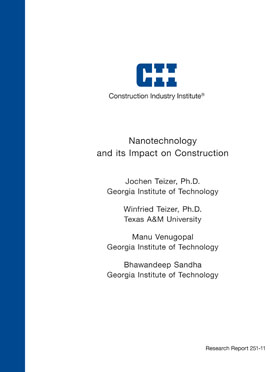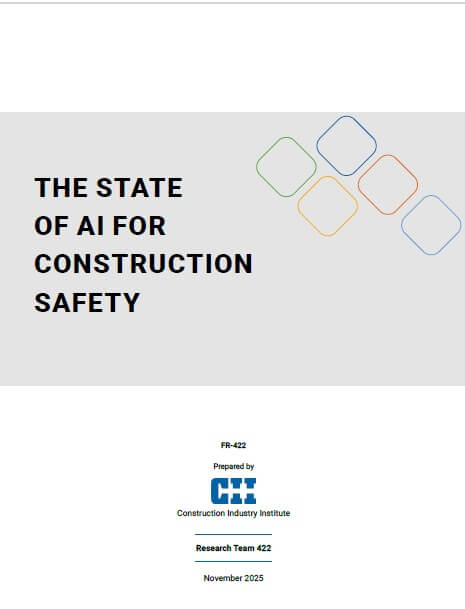
Nanotechnology and its Impact on Construction
This research aims to review the current nanotechnology programs and to identify three to five application areas that could benefit from a close collaboration between the engineering and construction industry and the research community. The research will review nanotechnology programs and summarize the existing knowledge and understanding of nanotechnology, explore existing nanotechnology ideas, needs, and products in various industry fields, learn from their history and experiences during product implementation, and quantify their potential value and implementation for construction. Benefits and limitations of selected nanotechnology applications will be evaluated for high impact potential in construction. Specific objectives of this research are:
- To better understand nanotechnology in the context of construction.
- To evaluate existing applications in nanotechnology and research in progress for specific development and application to construction.
- For major applications in nanotechnology, catalog description, projected impacts, benefits, and limitations.
- To recommend at least three to five nanotechnology products with likely high impact on construction applications and which address specific needs of CII Member companies.
- To identify partners for potential collaboration within the industry and research and development recommendations for further development.
- To strategize a plan for the development of an educational and training component for CII member companies to increase awareness in nanotechnology.
Scope and key scope limitations of this research are:
This research was a special CII project that started in the fall of 2007 and was completed in the summer of 2008. The research focused on heavy industrial project applications (e.g., pipe fitting, corrosion, coatings), the building construction industry (e.g., lightweight and stronger materials, surface characteristics), the transportation infrastructure (e.g., durable materials for road construction and maintenance), and information technology (e.g., rapid data transfer and other enabling field communication technologies). The following nanotechnology areas have been reviewed: production tools and techniques of nanomaterials, materials to produce nano-products, bulk construction materials (cement and concrete, steel, wood, asphalt), glass, coatings and pigments, composites, fire and safety, water, energy, computers and electronics, sensing and metrology, safety and health, and sustainability. This research report presents the following deliverables:
- A background on nanotechnology’s origin, reason for exploitation, success stories and failures, significant existing applications, advances being made, and product development under-way.
- A survey of CII member companies to determine expected trends, expectations arising from a phase-in of nanotechnology products in construction.
- A review and analysis of likely nanotechnology products with high potential impact and capabilities for construction.
- The identification of nanotechnology programs, industry partners, and essential steps to achieve industry needs and research interests.
Advancements in nano-manufacturing are expected to result in rapid development of new nano-materials. These manufacturing approaches fall under two categories "bottom-up" and "top-down." (RR251-11, p. 21)
- "Bottom-up" approach – Materials ad devices are built from molecular components, which assemble themselves, chemically by principles of molecular recognition. This approach can be thought of as putting together single atoms or molecules until a desired level of complexity and functionality has been achieved in a device.
- "Top-down" approach – Nano-objects are constructed from larger entities without atomic level control. This approach can be summarized as ‘a set of tools designed to build a small set of tools.
{^widget|(widget_displayname)WatermarkImage|(name)WatermarkImage|(image)%7e%2fCII%2fmedia%2fPublications%2f251_11Figure5-8.PNG%3fext%3d.png|(width)|(height)^}
Benefits that nanotechnology products will have on the construction industry include:
- Improved Mechanical and Physical Properties – to include higher strength materials, improved durability, wear and tear resistance, corrosion resistance, and improvements in fire resistance and aesthetics. (RR251-11, p. 98)
- Economical Benefits – to include value chain of life cycles, lower labor costs and operating and maintenance costs, improved customer satisfaction, and increased market value and brand image. (RR251-11, p. 99)
- Sustainability Benefits – to include energy efficiency, lower material consumption, social and ethical benefits, and an increase in innovation. (RR251-11, p. 100)


